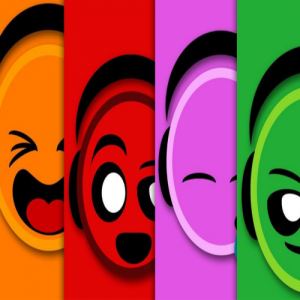I have given several talks on my approach to understanding, following and expressing Salsa music. I have had many requests from students to write this up and have been meaning to do so for a while. This article just skims the surface, and I could write all day about this, but hopefully you will find this short, concise and insightful.
So to introduce myself, as of this article I have been dancing Salsa for 8 years, teaching and promoting for about 4 years. I am also a keen born-again pianist and have an education in musical theory.
But before we jump in, DISCLAIMER, there are many ways to skin a cat and everyone will have their own tools. This is MY PERSONAL approach gained through years of listening to, talking about, experimenting with, and finally experiencing and expressing.
LAYERS
Music in any genre, whether it is POP, or R&B, can be analyzed by looking at the:
– Mood
– Structure
– Instrumentation
I used these layers to logically understand, break down, follow and predict the flow of Salsa music. This allows me to more fully connect with the songs that I recognise, and to understand what may be coming next for songs that I do not.
MOODS
Songs are not composed randomly and there will normally be a reason e.g. is the song about your mother? is it sad? or about the colour blue? is it a love song? Whatever the composer decides upon will influence the way that the song feels, I refer to this as the mood of the song. Things that contribute to the mood of the song can include: choice of instruments, song tempo, section intensity, energy flow.
If the song has lyrics you can very quickly understand what the mood of the song is, however, if you are like me and don’t speak Spanish (apart from a few words) you can still feel what the song is about and work with your gut, it really does not matter if you are right or wrong.
Moods can also be received and reflected by your dance partner. As every dance partner is different if you apply moods to your dancing, transfer this to your partner, and have your partner reflect back onto you, then every song you dance will have a different experience; every dance will be unique and you will quite literally add a fantastic new dynamic to your dance.
Tip: At the start of each song ask yourself what does this song make you feel? And why? Then start to think about how your body reacts.
STRUCTURE
Salsa music is NOT SPECIAL when it comes to structuring. I know what you are thinking, but what I am saying is the truth. This myth and the propagation of the myth are what keep people from learning more about music, so let’s work on it.
All Salsa music:
– Is transcribed on sheet music with a 4/4 time signature (4 beats in a bar)
– Consists of various sections: Intro, Verse, Chorus, Middle, Ending
– Consists of repeatable sections
The above is also true for most music you will hear on the radio. Most songs will start off with an introduction that sets the tone, followed by a number of verses and chorus combinations, then the Grammy winning explosion, and finally an ending. Salsa is the same.
An interesting note is that each section is generally multiples of 8 bars (4 eights as we dancers call it), and knowing this gives us insight as to when sections are coming to an end and a break might be on. Another interesting note is that the relative flow of energy for one section (4 eights) is the same for the other sections i.e. if the first eight are low energy, and then the second and third are higher energy, followed by the fourth eight with low energy, all the sections of the song will follow this pattern.
So how do I use this in my dancing? By combining the mood of the song with the structure, I can predict the energy levels and section changes in a song. By actively listening to each section, if I don’t hit the music the way I want to the first time around, I will the second time I hear a repeated section. This way I can progressively grow into, fully predict, and express the music.
Tip: Listen to music and put what I mentioned above into practice.
INSTRUMENTATION
Now we are going to talk briefly about the instruments that are used throughout Salsa Music. But first, it is important to know a bit about Salsa Orchestras and the dynamics between instruments. Salsa Orchestras can be split into the following sections and may include the following instruments: Rhythm (Congas, Bongo, Timbales, Bass, and Piano), Horns (Trumpet, Trombones, and Saxophones) and Vocals. The sections will be coordinated by the band leader and have to work together in a telepathic way.
Each instrument will have to follow the tempo set by the band leader; this tempo does not change through the duration of the song. However, each instrument will have their own individual rhythms, and the interlinking of these rhythms is what gives us such rich music. These rhythms are linked together with a key; this is known as the Clave (two wooden sticks).
My personal dance style is to groove with the rhythm section (being an on2 dance that primarily means the Conga’s and Bass), use the Horns for decoration and vocals for mood. This is a personal choice, but by understanding the various rhythms for each instrument in Salsa, and how you like to dance to these rhythms, you can better equip yourself for expressing yourself to the music.
Tip: You can familiarise yourself with the various rhythms played by the various instruments, practise listening to them, and then moving your body to these, most are not 123 567.
CONCLUSION
As I mentioned earlier, there are many ways to skin a cat, and in this case Salsa music. In this article, I have presented the way in which I personally break down music.
I hope this has been an interesting read and from this, you can think about your own breakdown. I would love to hear your comments.





Leave a Reply